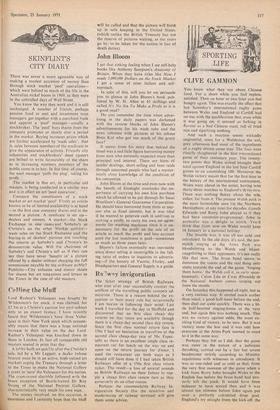SKINFLINT'S CITY DIARY
There was never a more agreeable way of making a modest accretion of money than through stock market 'pool' operations— which were behind so much of the life in the Australian nickel boom in 1969, as they were in the unbridled days of Wall Street.
You know the way they work and it is still unchanged. A number of friends, perhaps pension fund or unit and investment trust managers, get together with a merchant hank and appoint a 'pool' manager—usually a stockbroker. The 'pool' buys shares from the company promoter or slowly over a period in the market. Buying increases prices which are further accelerated by 'wash sales': that is, sales between members of the syndicate to give the appearance of activity. Friendly city columnists and stockbrokers' sheet tipsters are bribed to write favourably of the share as in increasing numbers members of the public come in to buy. In due time, of course, the pool manager 'pulls the plug', taking his profit.
The market in fine art, in particular old masters, is being conducted in a similar way and is in effect an art 'pool operation'.
Compare the constituents of a stock market or art market 'pool'. Firstly an article known to be of limited availability is at hand —in the first case company shares and in the second a picture. A syndicate is set up— dealers and owners. A market—the Stock Exchange in one case. and Sotheby's or Christie's on the other Market activity— wash sales on the Stock Exchange and the buying-in of dealers' pictures not reaching the reserve at Sotheby's and Christie's to demonstrate value. Will the chairmen of Sotheby's and Christie's tell us if they can say they have never 'bought in' a picture offered by a dealer without charging the full commission payable by the ordinary public? Publicity—City columns and tinster sheets for shares but art magazines and letters to the Times in the case of old masters.





































 Previous page
Previous page